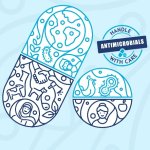
Antibiotic exposure could increase risk of juvenile arthritis
Taking antibiotics may increase the risk that a child will develop juvenile arthritis, according to a study from Rutgers University, University of Pennsylvania and Nemours A.I. duPont Hospital for Children published today in Pediatrics.



















